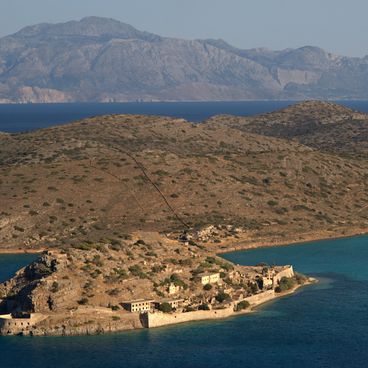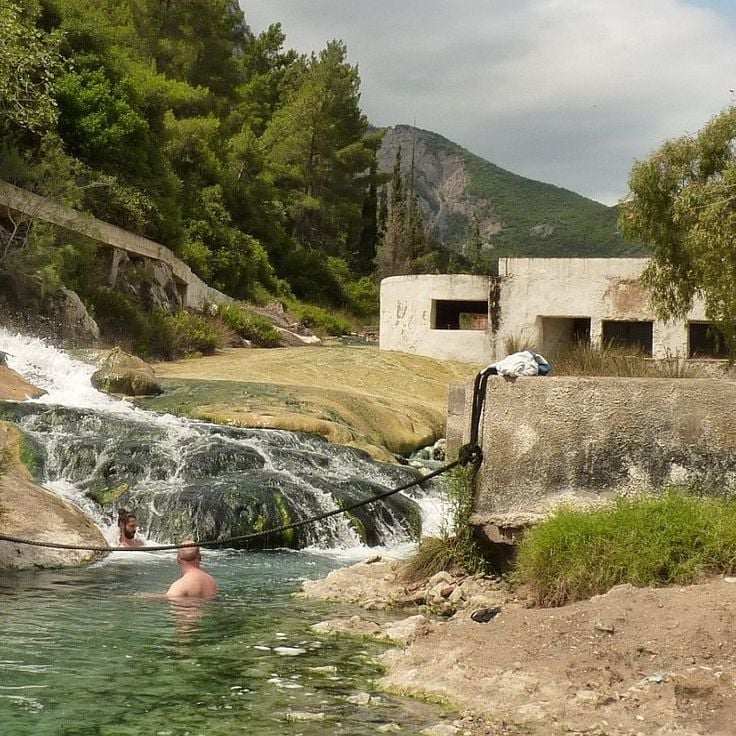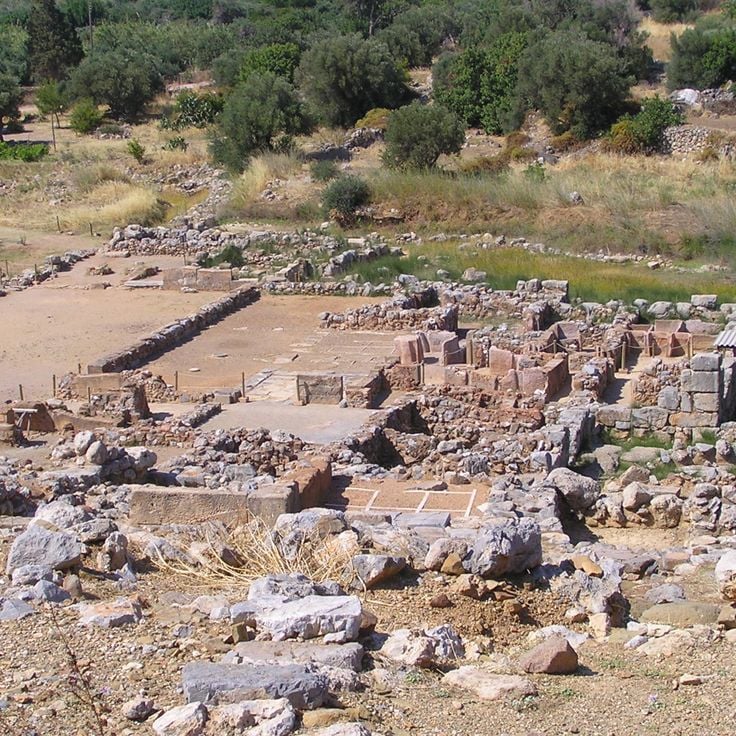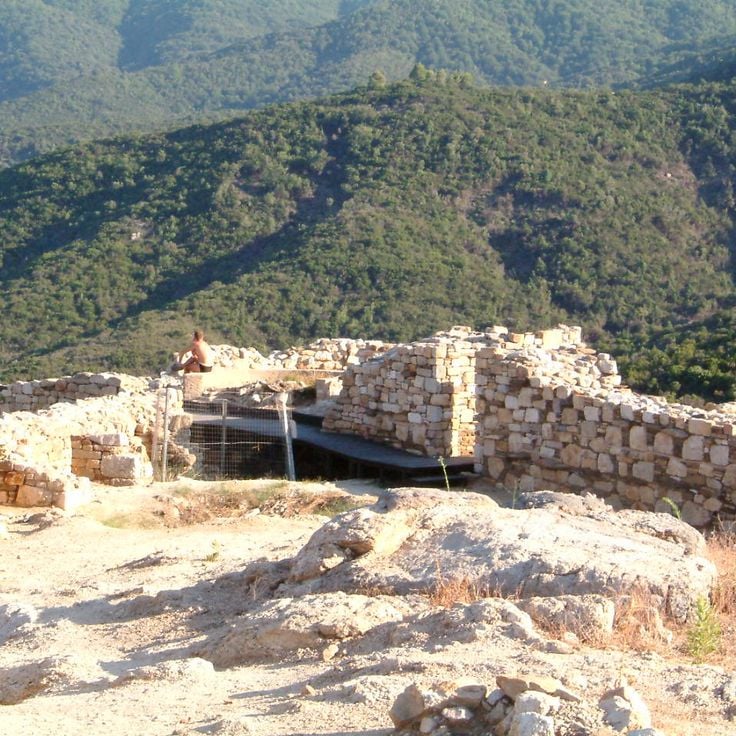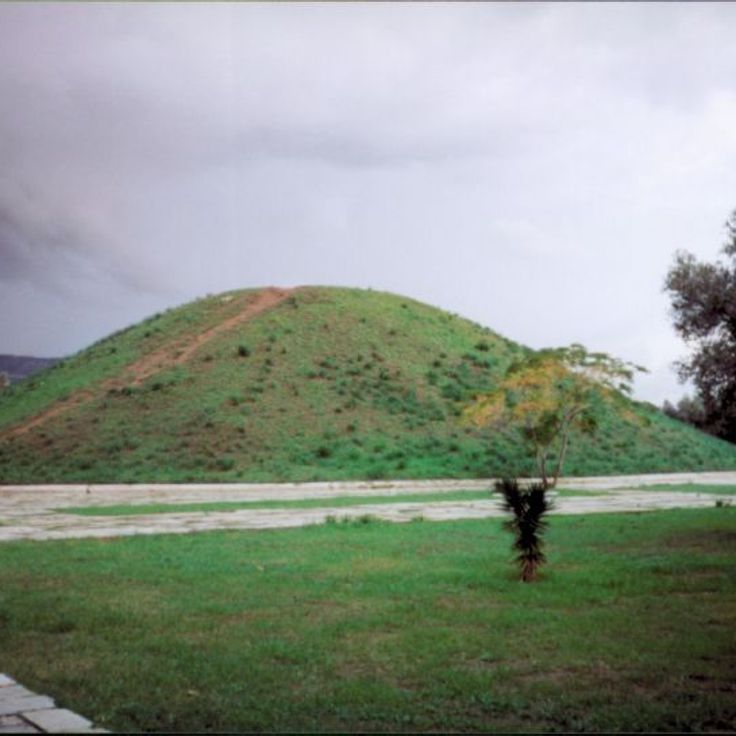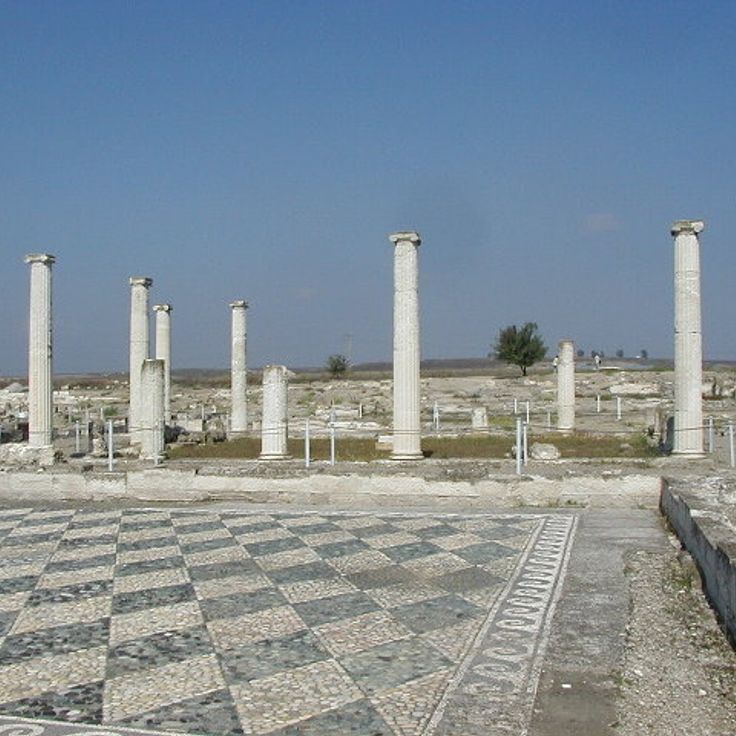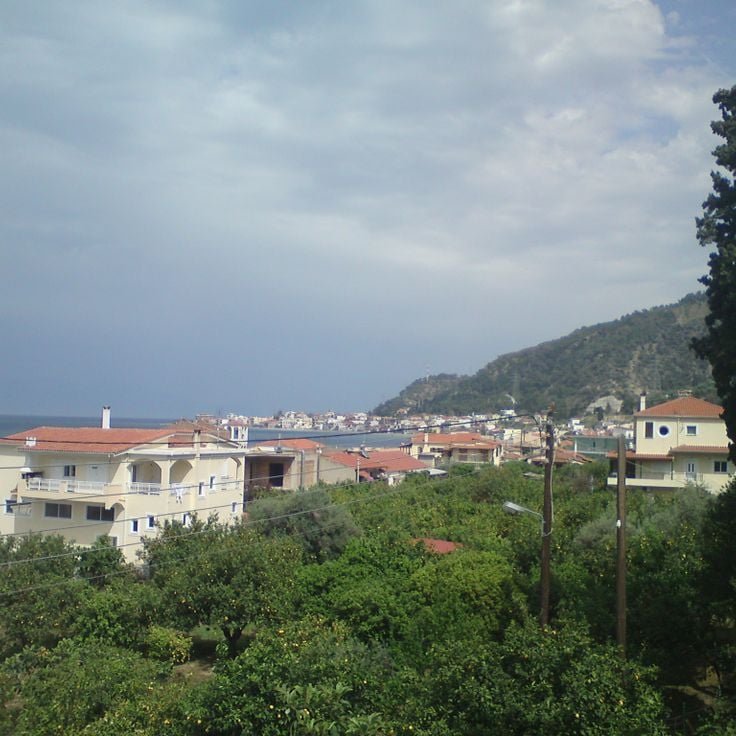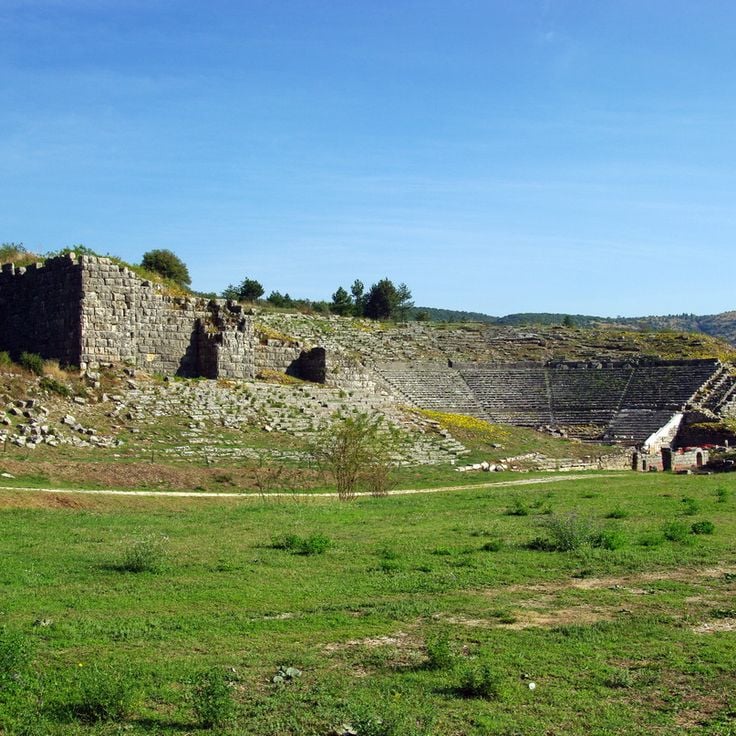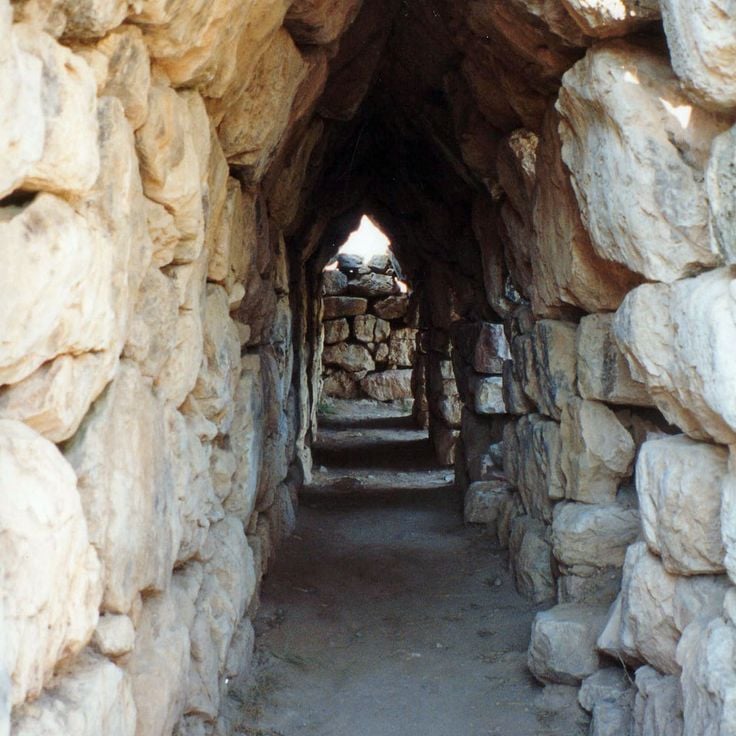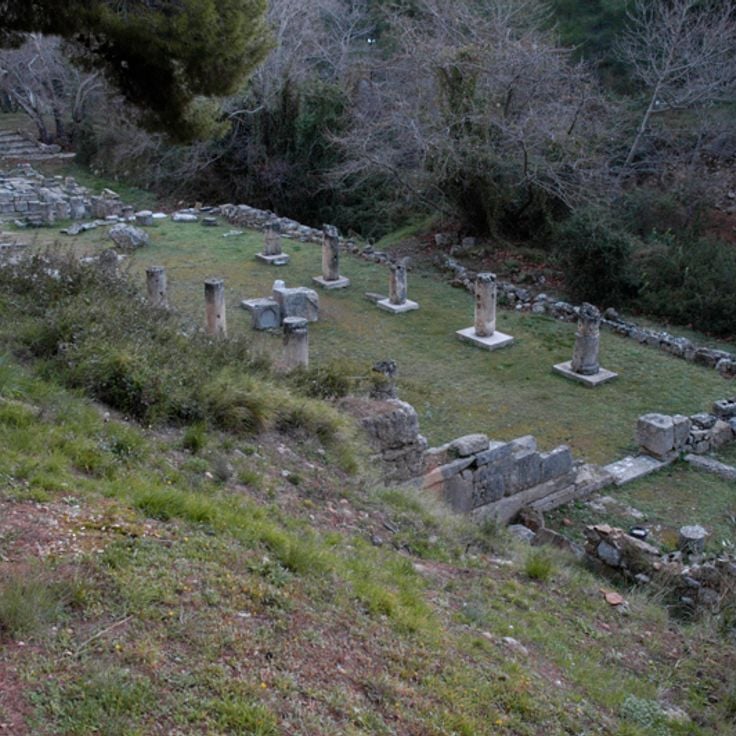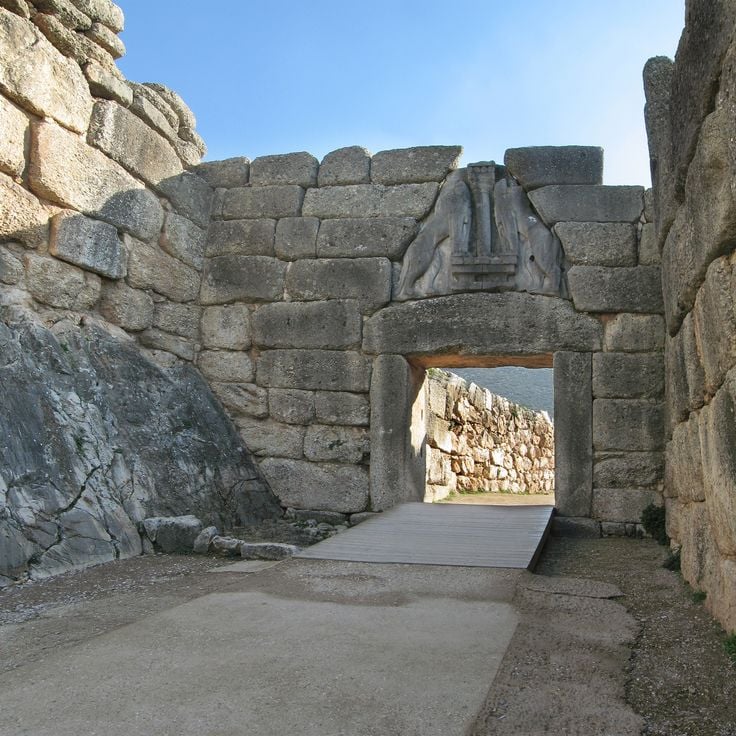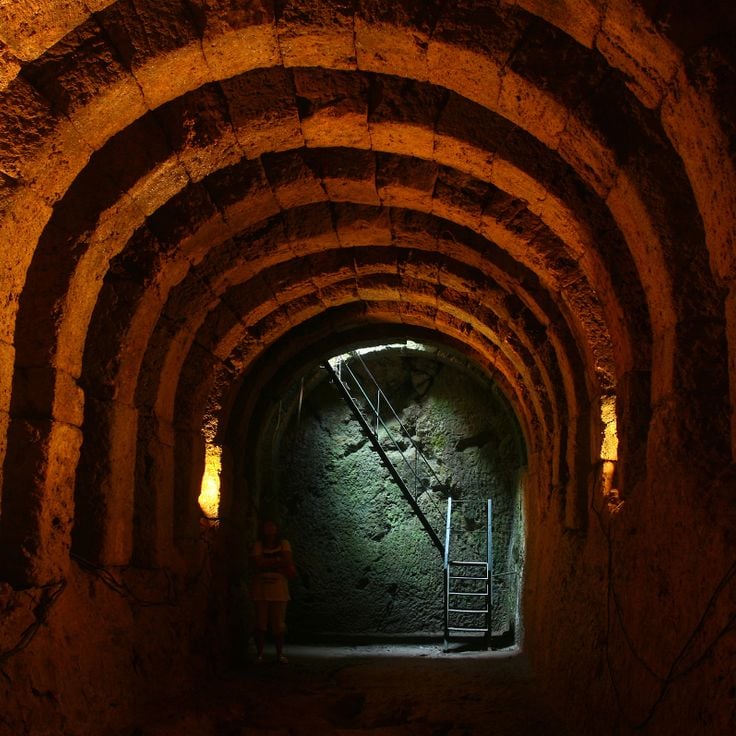These archaeological sites document several millennia of Greek history. The fortress of Tiryns displays Mycenaean military architecture from the 13th century BC, while the Oracle of Dodona ranks among the oldest Greek sanctuaries, where priests interpreted the future from the rustling of sacred oak trees. The ancient stadium of Olympia, which hosted the Olympic Games from 776 BC onward, lies in a wooded valley in the Peloponnese. The Minoan palace of Zakros on the eastern coast of Crete was destroyed by fire around 1450 BC and consequently remained largely intact. The Sanctuary of Artemis at Brauron, located about 40 kilometers from Athens, served as an important religious center where young girls served the goddess. These locations provide direct insights into religious practices, administrative structures, and daily life across different periods of ancient Greece.
The Thermopylae Battlefield occupies a mountain pass between the Kallidromos mountain range and the Malian Gulf. This strategic passage was the site of one of the most famous military engagements of ancient times in August 480 BC. King Leonidas I of Sparta led an alliance of Greek city-states against the Persian invasion under Xerxes I. The Spartan warriors and their allies defended the narrow pass for several days against a vastly superior Persian force. The terrain has been altered by sediment deposits from the Spercheios River over the centuries, moving the coastline approximately five kilometers further north than it was in ancient times.
The Minoan Palace of Zakros was constructed in the 16th century BC and served as an administrative and religious center for the region. The archaeological site includes several building complexes with storage areas that housed amphorae and trade goods, alongside workshops for craft activities. The sanctuary contains ritual objects and offering tables from the Minoan period. A functional canal system supplied fresh water to the palace and drained wastewater.
The Meteora Monasteries comprise six Orthodox monasteries constructed atop natural sandstone pillars. These monasteries were established during the 14th and 15th centuries at approximately 400 meters above the Thessalian plain. Monks built these religious sites on the rock formations to withdraw from the outside world and seek protection from invasions. The monasteries remain accessible through staircases carved into the rock and modern bridges.
Stagira is located on the Chalcidice peninsula and marks the birthplace of the philosopher Aristotle. This archaeological site preserves remains of an ancient city dating back to the 7th century BC. Visitors can explore foundations of the city walls, sections of the acropolis, and outlines of residential structures. The site provides insight into the urban layout of a classical Greek settlement. A statue of the philosopher commemorates the historical importance of the location. The ruins are situated in a quiet setting away from major tourist routes.
The Marathon Tomb rises nine meters above the plain and serves as the collective burial site of 192 Athenian warriors who fell during the Battle of Marathon against the Persians in 490 BCE. This earth mound was constructed immediately after the battle and represents an exception, as fallen soldiers were typically buried in Athens. The tomb stands approximately four kilometers from the ancient battlefield and contains cremated remains along with pottery fragments from the period. Archaeological excavations in the 19th century confirmed the historical accounts by Pausanias and Herodotus regarding this burial site.
The Sanctuary of Artemis at Brauron is located on the eastern coast of Attica, approximately 40 kilometers from Athens. This ancient religious site was dedicated to the goddess Artemis and served as a center for female initiation ceremonies. The complex includes a sacrificial altar, Doric colonnades, and residential quarters where young priestesses lived. Girls aged five to ten, known as arktoi (bears), participated in rituals preparing them for adulthood. The archaeological remains show the temple foundations, portions of the stoa, and a small museum displaying artifacts recovered from the site. The sanctuary functioned from the 6th century BCE until the 3rd century BCE.
Pythagoreion of Samos is an ancient port town located on the island of Samos in the eastern Aegean Sea. The archaeological site contains remains from Greek and Roman periods, including the Tunnel of Eupalinos, a sixth-century BCE underground aqueduct extending over one kilometer in length. This engineering achievement was excavated simultaneously from both ends and represents a notable example of ancient engineering techniques. The site also features remnants of city walls, a theater, and temples that provide insight into the history of this once important settlement.
The ancient city of Pella served as the capital of the Macedonian kingdom from 410 to 168 BC and was the birthplace of Alexander the Great. Excavations have revealed well-preserved mosaic floors, public buildings, residential houses, and workshops. The archaeological museum displays numerous findings including pottery, sculptures, and everyday objects from the Hellenistic period.
The Olympia Stadium was constructed in the 5th century BC and served as the main venue for the ancient Olympic Games. This sports facility featured stone seating for approximately 40,000 spectators and a 120-meter running track. Athletes from across the Greek world competed here in disciplines including running, wrestling, and pentathlon. The seating areas followed the natural slopes of the terrain, providing clear views of the competitions.
The Derveni Tombs are Macedonian burial chambers from the 4th century BC discovered near Thessaloniki. These burial structures contained numerous metal vessels, jewelry pieces, and the famous Derveni papyrus, one of the oldest surviving Greek manuscripts. The finds from the tombs provide important insights into the religious practices and craftsmanship of the Macedonian elite during the reign of Philip II and Alexander the Great.
The sanctuary of Dodona stands as one of the oldest Greek oracle sites, dedicated to Zeus. Priests interpreted prophecies from the rustling leaves of a sacred oak tree. The well-preserved theater from the 3rd century BCE accommodated 17,000 spectators and served religious festivals and dramatic performances. The site includes temple remains, a bouleuterion, and sections of the Hellenistic city wall.
Tiryns Fortress was constructed in the 13th century BC as a Mycenaean citadel. The defensive walls reach a height of 20 meters and consist of limestone blocks weighing up to 13 tons. This construction technique is called Cyclopean masonry, as later generations believed only giants could have moved such stones. The site includes a palace, storage rooms, and galleries within the walls. Tiryns is listed as a UNESCO World Heritage Site together with Mycenae.
The Amphiareion Sanctuary was an ancient therapeutic center dedicated to the hero Amphiaraos. This complex includes a Doric temple from the 4th century BCE, a sacred spring, an altar, and a theater with 300 seats. Visitors practiced incubation here, a ritual sleep during which they awaited healing dreams and divine guidance. The ruins sit in a wooded valley and display well-preserved architectural elements along with inscriptions documenting cures.
The Lion Gate of Mycenae was constructed in the 13th century BCE and marks the main entrance to the Bronze Age citadel. Above the entrance sits a triangular limestone relief panel depicting two lionesses facing each other, their front paws resting on an altar. Between the animals stands a column of Minoan type. This relief sculpture represents the oldest monumental figurative artwork in Europe and demonstrates the power of Mycenaean rulers.
The Telesterion of Eleusis was the central sanctuary of the Eleusinian Mysteries, dedicated to the goddesses Demeter and Persephone. This large initiation hall was used for secret religious ceremonies from the 7th century BC until the 4th century AD. The structure could accommodate several thousand worshippers simultaneously and featured a complex architecture with rows of columns and a raised platform. The mystery rites performed here were considered highly sacred, and their details were kept strictly confidential.
The Nekromanteion of Acheron is an ancient temple complex from the 3rd century BCE built at the confluence of the Acheron and Cocytus rivers. The Greeks considered this site an entrance to the underworld, where pilgrims performed elaborate rituals to communicate with deceased relatives. The underground chambers and passages served for religious ceremonies during which priests used acoustic and visual techniques to create apparitions of spirits.
Similar collections
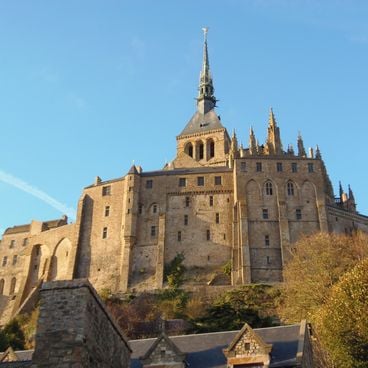
Monasteries in Europe: medieval abbeys, Orthodox buildings, and religious architecture
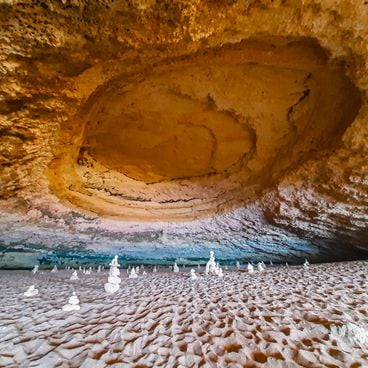
Discover hidden treasures of the world

Geological formations and natural wonders on Earth
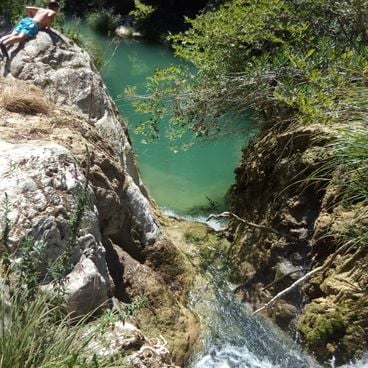
Historical landmarks in Peloponnese Greece
